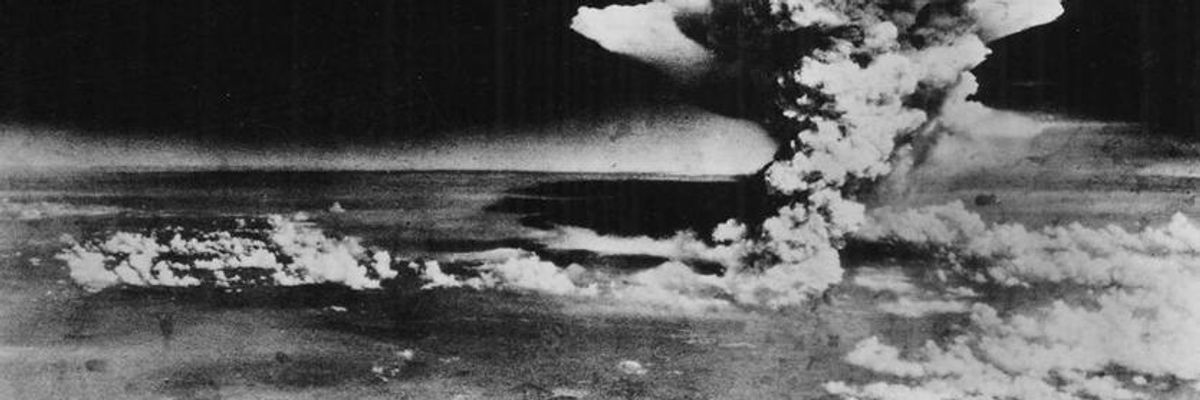On Aug. 6, 1945, the United States dropped a nuclear weapon on the Japanese city of Hiroshima. In the spring of 1946, writer John Hersey went to Japan to interview some survivors. The result was one of the most powerful and influential pieces of writing ever published: a long article which filled an entire issue of The New Yorker and then appeared as a book, "Hiroshima."
The book is not about politics or policy. It's about people, and what a nuclear weapon does to them. Hersey focuses on six individuals: a Protestant minister, a seamstress, a factory worker, two doctors, and a German Jesuit priest. All of them were at least three-quarters of a mile away when the bomb went off (virtually everyone closer than that was incinerated).
Hersey recounts, in cool prose that is all the more devastating for its restraint, what happened. First there was the blinding flash of light, then the blast, the collapsing buildings, the flying glass. Then the people trapped, crushed, under rubble. Then the fires. "Now not many people walked in the streets, but a great number sat on the pavement, vomited, waited for death, and died."
Hospitals were destroyed; more than 1,000 doctors and nurses were killed or injured. Inside one major hospital, the single uninjured doctor labored to take care of the 10,000 wounded who poured in: "Ceilings and partitions had fallen; plaster, dust, blood, and vomit were everywhere. Patients were dying by the hundreds, but there was no one to carry away the corpses." Wounded and burned people made their way to the banks of the river, where they lay all night shivering and festering, and strafed by the whirlwind that arose in the freakishly bomb-charged atmosphere; by morning many of them had drowned, too weak to retreat from the rising tide.
Hersey's survivors couldn't comprehend the magnitude of what had happened to them or to their city. The center of the city was gone, leveled. What was left was on fire. Each of them wandered in a world of nightmarish scenes. Hersey lets the vivid detail speak for itself. The pastor, trying to rescue survivors, "reached down and took a woman by the hands, but her skin slipped off in huge, glove-like pieces." A priest carrying water to victims came upon a group of 20 soldiers in the underbrush. "Their faces were wholly burned, their eye sockets were hollow, the fluid from their melted eyes had run down their cheeks."
In all, over 100,000 people died in the immediate aftermath of the bombing. Thousands more suffered from the long-term, often ultimately deadly, aftereffects of radiation.
Hersey's great achievement is to translate these unimaginable numbers, this unspeakable death and damage, into individual stories. Before I read his book I thought I knew what a nuclear weapon was and what it could do; afterward I realized that I hadn't known anything.
I was lucky enough to take a writing workshop with John Hersey in college. He was a grave, meticulous, self-effacing teacher. I have always admired "Hiroshima" as a piece of masterful prose. But this month, listening to the increasingly strident, irresponsible, and dangerous rhetoric from the White House, I got out the book and read it again. I felt its urgency and its relevance for today.
The story of six people at Hiroshima is the strongest possible indictment of nuclear weapons. Looking this closely at what happened, as Hersey did and as he allows his readers to do, is the best way to make sure it never happens again.
We have to look.

